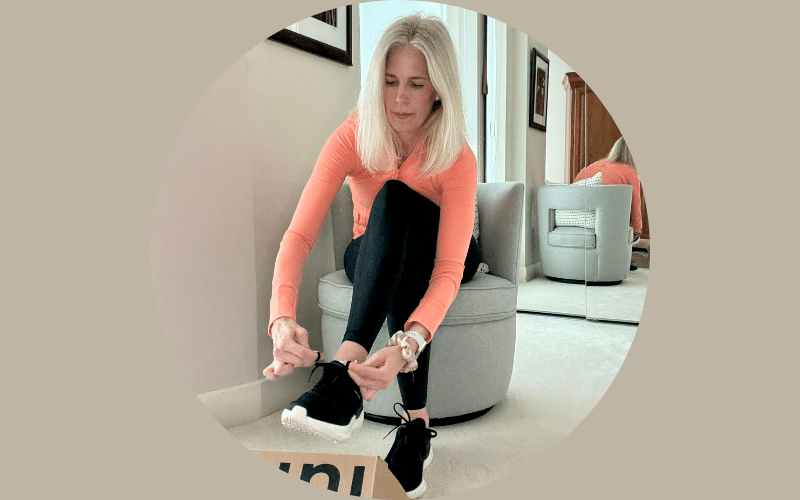Why Bone Density Matters
Your bones aren’t just a rigid framework—they’re living tissue that changes with age, activity level, and nutrition. Peak bone density is typically reached in your 20s and 30s, but after that, bones can gradually lose strength, leaving you at greater risk of fractures or osteoporosis. Monitoring your bone health early can help you make smarter choices and prevent future issues.
Nutrition for Strong Bones
What you eat plays a major role in bone density. To build and maintain strong bones, focus on:
-
Calcium-rich foods: dairy, fortified plant-based milks, leafy greens, almonds, and canned fish with bones (like salmon or sardines).
-
Vitamin D: essential for calcium absorption. You can get it from sunlight, fortified foods, or supplements.
-
Protein: supports bone structure and muscle mass, which helps protect bones.
-
Magnesium and Vitamin K: found in nuts, seeds, and leafy greens, these micronutrients also play a role in bone metabolism.
Best Exercises for Bone Health
Not all movement affects bones equally. To strengthen your bones, include:
-
Weight-bearing exercises: walking, jogging, dancing, and hiking help stimulate bone growth.
-
Resistance training: lifting weights or using resistance bands builds both muscle and bone strength.
-
Balance and flexibility training: Pilates, yoga, and tai chi reduce fall risk and support bone-protective posture.
Using Smart Scales to Monitor Bone Density
Smart scales use bioelectrical impedance analysis (BIA) to estimate body composition, including bone mass. While these measurements aren’t a replacement for a DEXA scan (the medical gold standard), they’re valuable for tracking trends over time and keeping you motivated.
How to Best Monitor Your Bone Density at Home
-
Choose a scale with bone mass tracking. Make sure it includes metrics beyond weight.
-
Use a connected app. Look for models that sync with apps so you can track long-term progress.
-
Be consistent. Weigh yourself on the same surface, at the same time of day, for reliable results.
-
Understand limitations. Smart scales provide estimates, not clinical diagnoses. Use them for patterns, not absolutes.
-
Sync your data. Connect to Apple Health, Google Fit, or other apps to combine insights on nutrition, activity, and sleep with bone health metrics.
Pro Tip: Think of your scale as part of your health toolkit. Pair it with consistent nutrition, weight-bearing exercise, and regular check-ups for the best long-term bone health outcomes.
Top-Rated Brands for Bone Density Monitoring
-
Withings: Premium models measure bone mass, body fat, and even ECG. Their Health Mate app gives detailed trend insights over time. Deals on Amazon.com and Amazon.ca
-
Eufy: User-friendly and accurate, Eufy scales measure bone mass alongside multiple metrics, with a streamlined app experience. Deals on Amazon.com and Amazon.ca
-
Renpho: Budget-friendly yet feature-rich, Renpho scales sync with popular apps like Apple Health and Google Fit for a balanced option. Deals on Amazon.com and Amazon.ca
Key Criteria
When you want to track bone mass (and other health metrics), these are the must-haves and nice-to-haves:
| Feature | Why It Matters for Bone / Health Tracking | Your Minimum / Ideal |
|---|---|---|
|
Bone Mass / Bone Mineral Content (BMC) measurement |
Many body-composition scales only estimate fat, muscle, water, etc. For bone health you want one that at least gives bone mass or a bone indicator. | A model that reports bone mass or BMC (not just “weight + fat”) |
| App / ecosystem support | To trend your data, connect with Apple Health, Google Fit, or Fitbit (or Withings ecosystem) | Seamless sync with your preferred health apps |
| Multiple user profiles / auto recognition | If more than one person is using the scale | At least 4–8 user profiles, ideally unlimited |
| Good sensors & accuracy | To reduce error (especially when tracking small changes) | 4–8 high-precision sensors, auto-calibration, stable platform |
| Ease of use / display / UI | Daily use is easier if the display is clear, and the scale syncs quickly | Bright display, minimal lag in sync, simple app interface |
| Durability / safety | You want a non-slip surface, solid build, stable platform | Tempered glass surface, sturdy feet, good construction |
| Budget vs features | Premium models (e.g. Withings) will often cost more but offer deeper analytics | Choose the scale that gives the metrics you really will use |
Final Thoughts
Bone health is about more than avoiding fractures—it’s about living a strong, active, and independent life as you age. By pairing smart nutrition and exercise with the latest technology, you can keep tabs on your bone density and make changes before problems arise. Smart scales offer an accessible way to monitor progress, stay motivated, and integrate bone health into your overall wellness journey.
Contact Us
Create a Free Account
Receive weekly emails with workouts, tips & offers to help you live more vibrantly.


